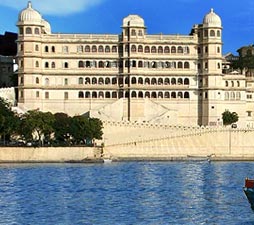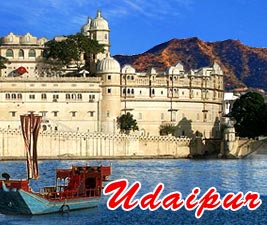Award Song - Movie
Filmfare Awards 1977Kya Hua Tera Wada - Naya Daur
Filmfare Awards 1968Dil Ke Jharoke Mein Tujko Bithakar - Brahmachari
Filmfare Awards 1967Neele Gagan Ke - Humraaz
Filmfare Awards 1966Baharon Phool Barsaao - Suraj
Filmfare Awards 1964Chahunga Main Tujhe - Dosti
Filmfare Awards 1961Chasme Baddor - Sasuraal
Filmfare Awards 1960Chaudvin Ka Chand - Chaudvin Ka Chand
Rafi was born on December 24, 1924 in a small village in Punjab (now in Pakistan) near Amritsar and later shifted to Lahore when he was 14 years old. There he studied music under Khan Abdul Waheed Khan, Jeevanlal Matto and Ghulam Ali Khan. He recorded his first song in 1944 for a Punjabi film Gul Baloch with music director Shyam Sunder. Not many people know that had acted in couple of films, Laila Majnu (1945) and Jugnu (1947). Rafi made his mark with Tera Khilona Toota Balak in Anmol Ghari (1946).
In the year 1944 Mohammad Rafi decided to move to Bombay where he was first given a break by Naushad in Pehle Aap (1944). Rafi's first big hit was in Jugnu (1947) where he sang the duet 'Yahaan Badla Wafaa ka Bewafaee ke Siva Kya Hai' with Noorjehan under Feroz Nizami.
His career took off with the all-time hit Suhani Raat Dhal Chuki from Dulari(1949). There was no looking back aftermath and Rafi ruled as the undisputed king of playback singing till the early 70s when Kishore Kumar took over. However it took Rafi much of the 50s to establish his superiority over rest of the competition. Kishore Kumar and to a lesser extent Mukesh and Talat Mehmood were preoccupied by their acting while Hemant Kumar saw a decline in his singing career by the end of the 1950s. Manna Dey never really got the breaks his talent deserved and from 1960-1970 Rafi was unchallenged at the top. In spite of his superstardom he remained humble and soft-spoken.
Although Rafi worked with different music directors, the one who recognised and exploited his immense talent was Naushad. His first song for Naushad was Hindustan ke hum hain Hindustan hai hamara in the film Pehle Aap. The duo worked together to give hits such as Baiju Bawra and Mere Mehboob, to name a few. Rafi’s other fruitful partnership was with S D Burman are Kagaz Ke Phool, Guide, Tere Ghar Ke Samne and Pyaasa. Rafi has sung some of the best songs for heroes under the influence of alcohol like 'Din Dhal Jaaye' in Guide (1965) and 'Choo Lenedo Nazuk Hothon ko' in Kajal (1965) without touching the alcohol himself! Aradhana (1969) turned out to be another great movie where Rafi sang for the baton of Naushad and S.D. Burman. great hit Aradhana (1969).His last song was "Tu kahin aas paas hai dost" for Laxmikant Pyarelal in the film Aas Paas. He passed away on July 31, 1980. His immortality is vouched for by the fact that even almost two decades after his death, his popularity remains intact.
Filmfare Awards 1977Kya Hua Tera Wada - Naya Daur
Filmfare Awards 1968Dil Ke Jharoke Mein Tujko Bithakar - Brahmachari
Filmfare Awards 1967Neele Gagan Ke - Humraaz
Filmfare Awards 1966Baharon Phool Barsaao - Suraj
Filmfare Awards 1964Chahunga Main Tujhe - Dosti
Filmfare Awards 1961Chasme Baddor - Sasuraal
Filmfare Awards 1960Chaudvin Ka Chand - Chaudvin Ka Chand
Rafi was born on December 24, 1924 in a small village in Punjab (now in Pakistan) near Amritsar and later shifted to Lahore when he was 14 years old. There he studied music under Khan Abdul Waheed Khan, Jeevanlal Matto and Ghulam Ali Khan. He recorded his first song in 1944 for a Punjabi film Gul Baloch with music director Shyam Sunder. Not many people know that had acted in couple of films, Laila Majnu (1945) and Jugnu (1947). Rafi made his mark with Tera Khilona Toota Balak in Anmol Ghari (1946).
In the year 1944 Mohammad Rafi decided to move to Bombay where he was first given a break by Naushad in Pehle Aap (1944). Rafi's first big hit was in Jugnu (1947) where he sang the duet 'Yahaan Badla Wafaa ka Bewafaee ke Siva Kya Hai' with Noorjehan under Feroz Nizami.
His career took off with the all-time hit Suhani Raat Dhal Chuki from Dulari(1949). There was no looking back aftermath and Rafi ruled as the undisputed king of playback singing till the early 70s when Kishore Kumar took over. However it took Rafi much of the 50s to establish his superiority over rest of the competition. Kishore Kumar and to a lesser extent Mukesh and Talat Mehmood were preoccupied by their acting while Hemant Kumar saw a decline in his singing career by the end of the 1950s. Manna Dey never really got the breaks his talent deserved and from 1960-1970 Rafi was unchallenged at the top. In spite of his superstardom he remained humble and soft-spoken.
Although Rafi worked with different music directors, the one who recognised and exploited his immense talent was Naushad. His first song for Naushad was Hindustan ke hum hain Hindustan hai hamara in the film Pehle Aap. The duo worked together to give hits such as Baiju Bawra and Mere Mehboob, to name a few. Rafi’s other fruitful partnership was with S D Burman are Kagaz Ke Phool, Guide, Tere Ghar Ke Samne and Pyaasa. Rafi has sung some of the best songs for heroes under the influence of alcohol like 'Din Dhal Jaaye' in Guide (1965) and 'Choo Lenedo Nazuk Hothon ko' in Kajal (1965) without touching the alcohol himself! Aradhana (1969) turned out to be another great movie where Rafi sang for the baton of Naushad and S.D. Burman. great hit Aradhana (1969).His last song was "Tu kahin aas paas hai dost" for Laxmikant Pyarelal in the film Aas Paas. He passed away on July 31, 1980. His immortality is vouched for by the fact that even almost two decades after his death, his popularity remains intact.





